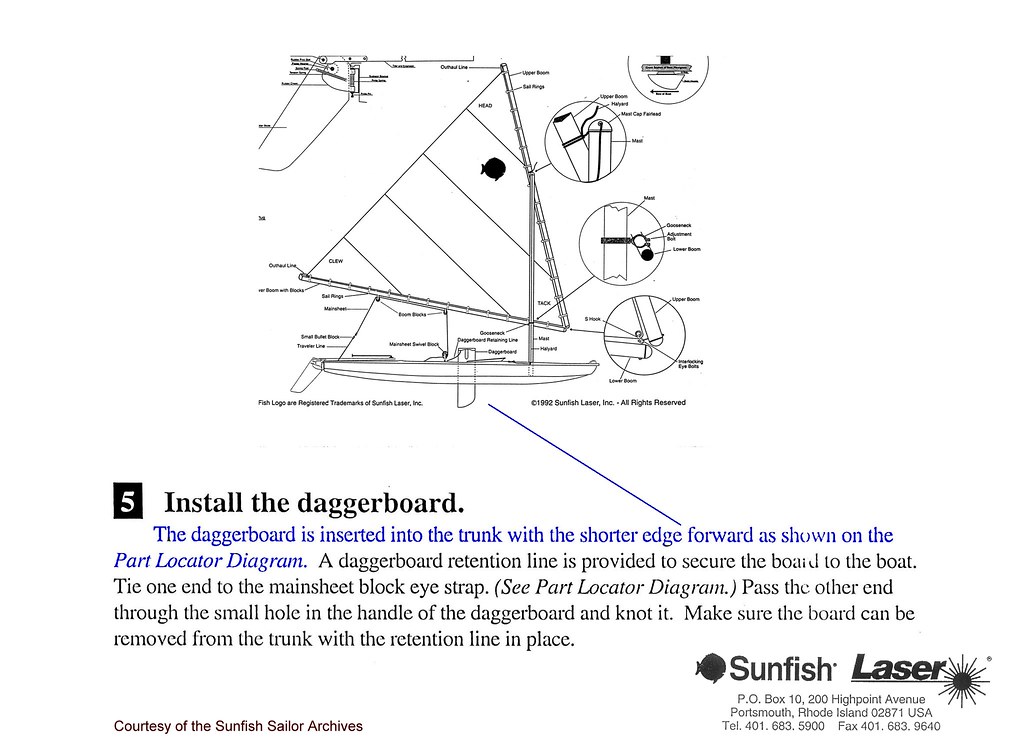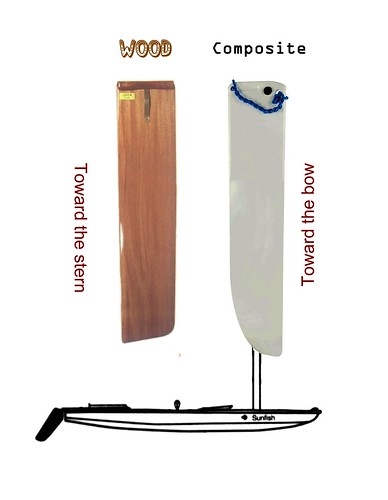gsr977
Apr1977-Sunfish
Mostly occurs at higher speeds. At times acts like a speed brake. I positioned my wooden centerboard with the eyelet forward. At this position the center board sweeps aft, do I have it in backwards?
Follow along with the video below to see how to install our site as a web app on your home screen.

Note: This feature currently requires accessing the site using the built-in Safari browser.
This is a source of debate. The composite "racing" board, now standard, goes in oriented the opposite way from how the wood board instructions show. Some wood board owners, especially those with the "Shadow" profile from the 1970s swear flipping the wood board long edge forward performs best for them. Try it both ways and see how it performs for your sailing style.I positioned my wooden centerboard with the eyelet forward. At this position the center board sweeps aft, do I have it in backwards?

. . . the wood board instructions show.

This may help...The diagram that Wayne showed (from 1992) might confuse those with newer boards. The current version has the curved, shorter edge facing aft.

If your board is the "old style", they were pretty nondescript unless someone reworked them. Straight from the Sunfish shop both edges were rounded the same and had equal thickness. The changing arc at the tip was subtle at best. Racers would often feather one edge making it the trailing edge. Racing Class rules set limits on how much the edges could be modified and still be allowed in class events. Today many variations are found, the result of all the customization people did.As far as my centerboard is concerned (circa. 1977) the leading and trailing edges seem to be identical.

The composite board does drop right in and IMHO adds to performance.P.S. Does the newer style centerboard drop right in and work well with an older hull, and does it float?
I wonder what's changed. I bought mine in the late '90s and thought I remembered it sinking like a rock. I don't think I've dropped it in the lake since then..., always tethered.Wayne, unless my board is special, the new boards do float. I've "tested" it and the results saved me $260 that would have otherwise been a gift for Davy Jones.